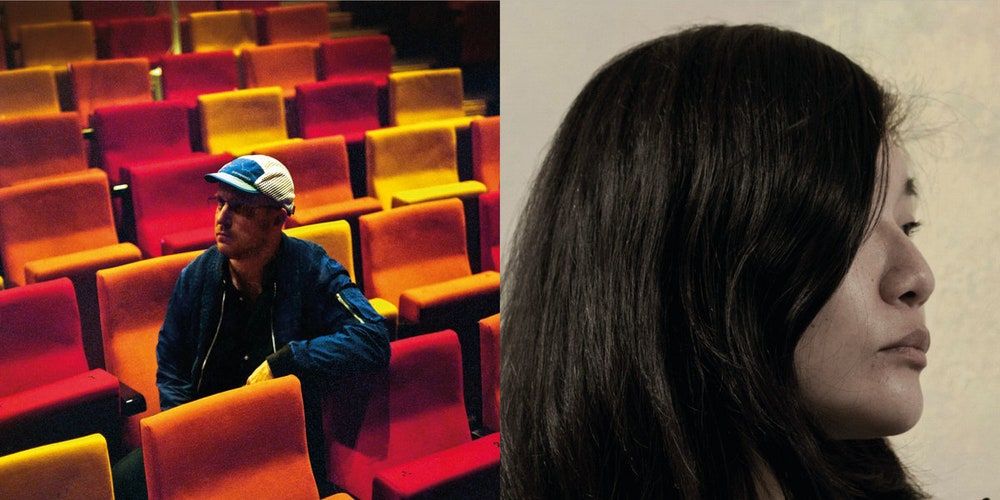Okkyung Lee and Florian Hecker (aka Hecker) both find freedom in limitation, channeling the infinite possibility inherent in cello and code, respectively. Their methods sometimes verge on hermetic; some of their weaker work sounds more like a demonstration of every sound that can be squeezed from their instrument than a robust composition. On Statistique Synthétique / Teum (the Silvery Slit)—a split album co-released by computer-music heavyweights INA GRM and Editions Mego—both artists attempt to transcend the limits of their approaches by synthesizing their habitual palette with fresh sounds and techniques.
Hecker’s “Statistique Synthétique” leans toward the acoustic: His piece is composed from resynthesized field recordings collected from Croatia, Massachusetts, and other locations. This earthly foundation grounds the music’s strongest moments, where his elemental swarm of electronics mimics cricket chirps, a gushing river, and the warped strum of a zither. Though the work is unmistakably digital, Hecker’s use of field recordings grants it a natural narrative: Sounds flow from one location to the next, and the composition becomes a tapestry of landscapes, a churning, synthetic road trip.
The field recordings give “Statistique Synthétique” a coherent compositional thrust, but Hecker’s use of resynthesis essentially obliterates his source material, reducing the piece to an airtight slab of computerized noise marked by tired tropes—rising sine-tone glissandi, comical burps and gurgles, and dull, clunking thuds and thwacks—that sound well-worn rather than alien. In the final seconds, a raw field recording creeps in: We hear chatter, a car horn, a jackhammer. It’s a moment of much-needed vitality, but the music immediately cuts to black, and the world beyond the computer simply vanishes.
On Lee’s “Teum (the Silvery Slit),” a heavy-handed stereo effect—likely stemming from her use of INA GRM’s Acousmonium—smears her cello across the soundstage, casting a mysterious pseudo-digital spell over the cascading torrent. Though the sound of her instrument is instantly recognizable, in the composition’s strongest moments it becomes denatured, stripped of its natural qualities and reduced to sonic putty. Here, stretches of desert—creaks and scrapes of wood, ratcheting percussive blasts—give way to teeming waves of suspended screeches and plucks; her astoundingly flexible playing in turn recalls the icy chiming of Horațiu Rădulescu’s “Clepsydra” and the shadowy, tectonic crawl of Iancu Dumitrescu’s “Medium III.”
But Lee begins to run out of ideas in the second half. The music’s taut internal logic disintegrates as a steady droning note emerges, and Lee begins cycling through her bristling armory of extended techniques, breaking the pseudo-digital spell and regrounding her sound in the familiar realm of solo free improvisation. Here, Lee’s use of the Acousmonium becomes a novelty rather than a necessity. She summons multiple cellos, multiple Lees, but the sense of scale is lost; at its weakest, it sounds less like a truly unified composition than a simple copy-and-paste job.
Lee and Hecker have established themselves as pioneers in their respective fields through a relentless commitment to experimentation, but the singular nature of their music is double-edged. As they exhaustively mine the depths of their instruments, they risk succumbing to tunnel vision. This is why their strongest work involves active collaboration that allows them to recontextualize their approaches and overcome their inherent limitations. Though they are discrete compositions, “Statistique Synthétique” and “Teum (the Silvery Slit)” sound like complementary parts of a whole, each embodying what the other is missing: They lean enticingly toward one another in sonics and construction, and in their strongest moments seem poised to produce a genuine rupture. They never quite make it there.
Buy: Rough Trade
(popitrecords.com.)
Catch up every Saturday with 10 of our best-reviewed albums of the week. Sign up for the 10 to Hear newsletter here.
